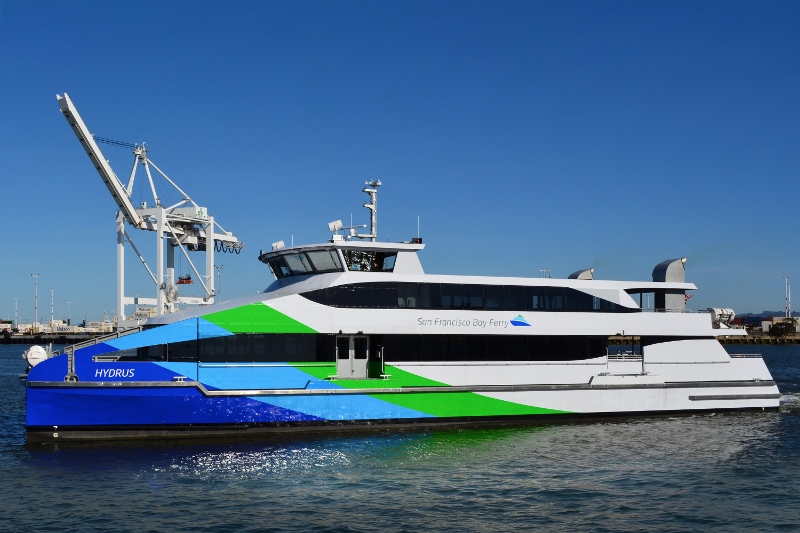New York City and San Francisco appear as swaggering models of success. But for their worker bees, getting in and out of the hive can be a daily ordeal.
Both cities are returning to water transit, a backbone of their economies right into the 1930s, when the arrival of the automobile age brought the great bridges, and in New York, tunnels under the Hudson River.
New York Mayor Bill de Blasio has staked much on a $355 million investment in the NYC Ferry public system, designed by the city Economic Development Corp. and operated by Hornblower.
With a fare of $2.75, same as the trouble-ridden Metropolitan Transit Authority subway system, the new 150-passenger ferries are wildly popular, surpassing their 1 million ridership milestone in the first three months of operation.

A NYC Ferry on the East River in May. Kirk Moore photo.
Long lines and delays, especially on weekends, has the city and Hornblower scrambling to increase capacity, leasing other ferries and upping the order on the 20 new ferries to include three 250-passenger vessels.
While de Blasio pitched the ferry as a way to improve life for outer borough commuters, it is no substitute for the sheer volume of movement through subways and buses. San Francisco planners, on the other hand, are looking to ferries as a major strategy for dealing with congestion.
In the September issue of WorkBoat we will look at that 20-year plan from the Water Emergency Transportation Authority – and its new boats that are already coming.
I talked to captain Dushan Crawford a few days after he brought the 134’x38’x6.5’ Incat Crowther-designed ferry Cetus down from the Vigor Marine shipyard in Seattle. It is the second in a class of four 400-passenger vessels, part of a $175 million program to expand the public San Francisco Bay Ferry system.
The Cetus and sistership Hydrus are a big step up in capacity and comfort. Seating is about double that of the WETA Gemini-class boats.
And they are quiet inside at 27 knots. “You don’t feel any vibration. It’s like a plane on the water,” said Crawford.
That comfort level was important to WETA, which worked closely with Incat and Vigor engineers, said Jim Gow, senior project manager at Vigor.
“The gears are hard-mounted, while the engines have isolation mounts, said Gow. “That takes a lot of the vibration out.” The superstructure too rests on 180 rubber points.
What comes out of the engine stacks is reduced too. Pacific Power Group, a longtime partner with WETA and Vigor, designed the MTU propulsion system with selective catalytic reduction (SCR) technology that takes the Tier 3-rated engines and reduces their emissions to exceed Tier 4 standards.
These big, comfortable, clean-running boats should get a lot of attention from other coastal cities with transit problems.




